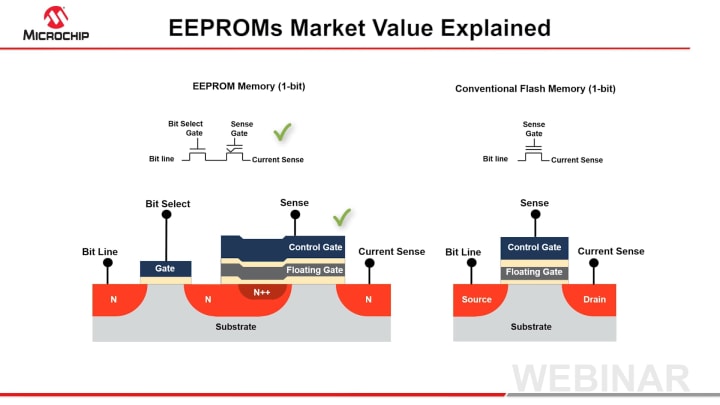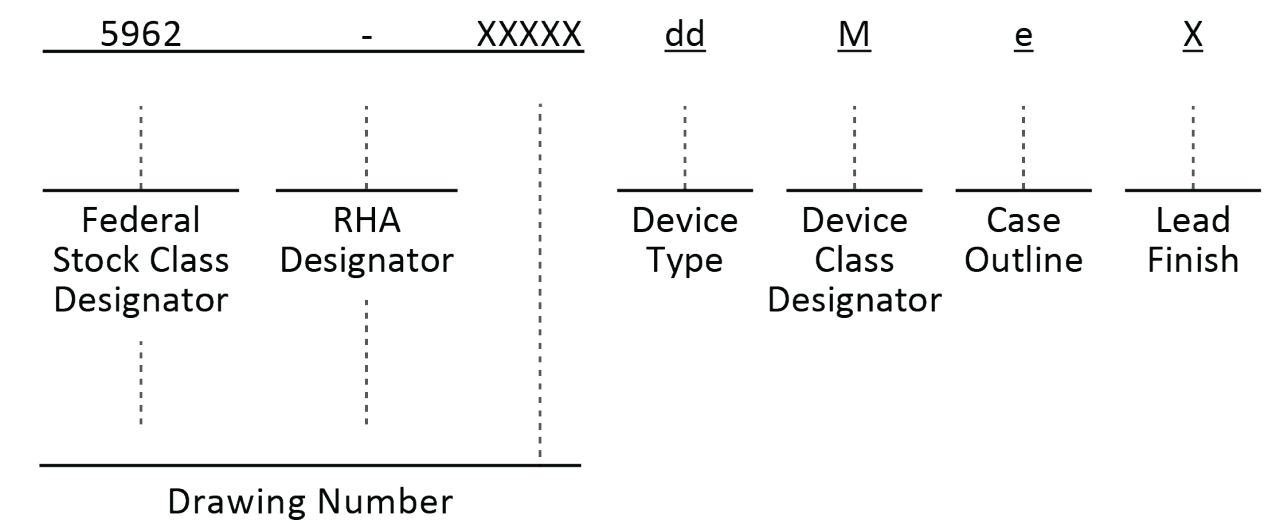Live Chat
Need Help?
Privacy PolicyTo support military-grade and industrial products, we provide a broad selection of traditional parallel EEPROM devices. Our practice of customer-driven obsolesce empowers you to create enduring designs for a broad spectrum of telecommunications, avionics and military applications, without the risk of forced redesign due to supply limitations. To meet the demands of both industrial (−40°C to 85°C) and military-grade (−55°C to 125°C) temperature applications, we offer our parallel EEPROM devices in a wide selection of densities (64 Kbit to 1 Mbit) and package options.
Why Design with Our Parallel EEPROMs?
EEPROMs Market Value Explained
In this webinar, we discuss EEPROM memory cell structure and the values this structure offers over NOR Flash.

Parallel EEPROM Frequently Asked Questions

3. Do you offer programming support?
Please see the third-party programmer application note if you would like to program or read stand-alone devices. This application note lists companies that offer stand-alone device programming tools. Review the list for a company near your location.
4. Can I purchase die or a whole wafer?
Of the three densities offered, 64 Kbit, 256 Kbit and 1 Mbit all are available as either diced die in a waffle pack or as whole wafer.
5. How does Parallel EEPROM (PEEPROM) speed compare to that of a serial device?
A PEEPROM’s 90 ns tAA speed equals approximately 11 MHz of serial clock speed. Thus, a PEEPROM’S communication speed and ability to access 8 or 16 bits at once provides for excellent data transmission rates.
6. Is there a difference between industrial and military devices?
The military version has Error Correction Coding (ECC) and error detection and fixing, which are features that the industrial version does not offer. Four internal parity bits exist for every byte, and using the Hamming algorithm, the device will automatically fix the first bit error in every byte.
Since we test all 12 bits, you will not see an error until the second bit failure in the same byte. The odds of this happening are very low, hence the highly reliable nature of the military products.
7. Are these military-graded parts covered under ITAR?
The AT28xxM/883 military-graded (rated/warrantied between −55°C and +125°C) product has an export classification of 3A001.a.2.c. These parts are controlled by the U.S. government under the Export Administration Regulations (EAR). However, they are not controlled under International Traffic in Arms Regulations (ITAR).
8. When will these parts be discontinued?
These parts are subject to market conditions and the continued operations of package component suppliers. Over the last 20+ years, some suppliers have discontinued the components for the various packages utilized by this product family; both industrial plastic and ceramic military packages have been affected. Where possible and feasible, our packages have been qualified internally. As long as customer demand exists and it is feasible, we will continue to support and supply these devices. There are no current plans to discontinue these products, and they will remain available for customers who utilize these devices.